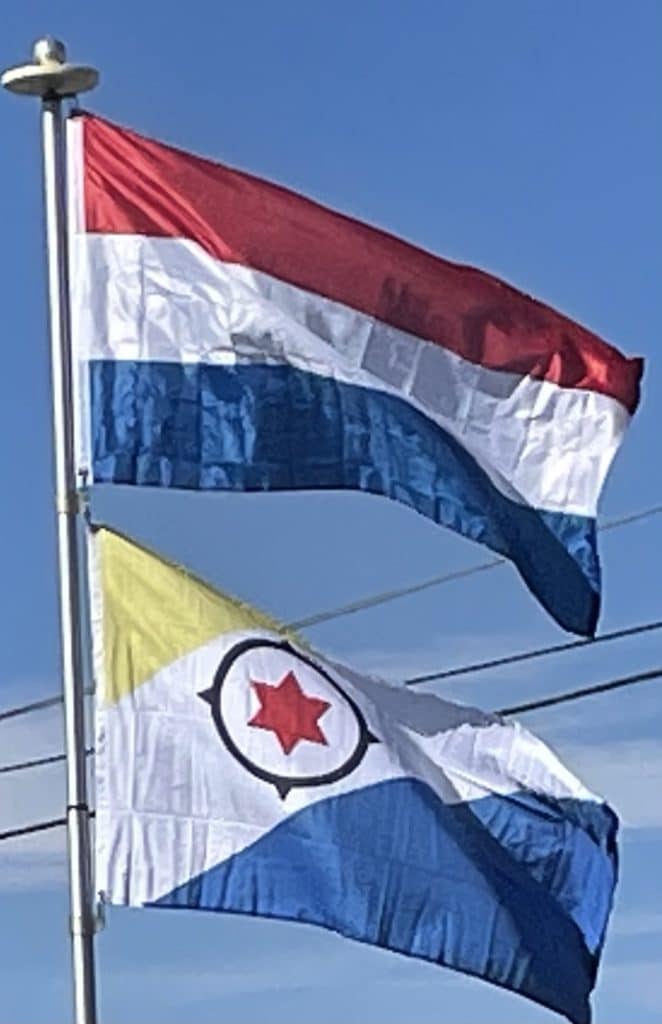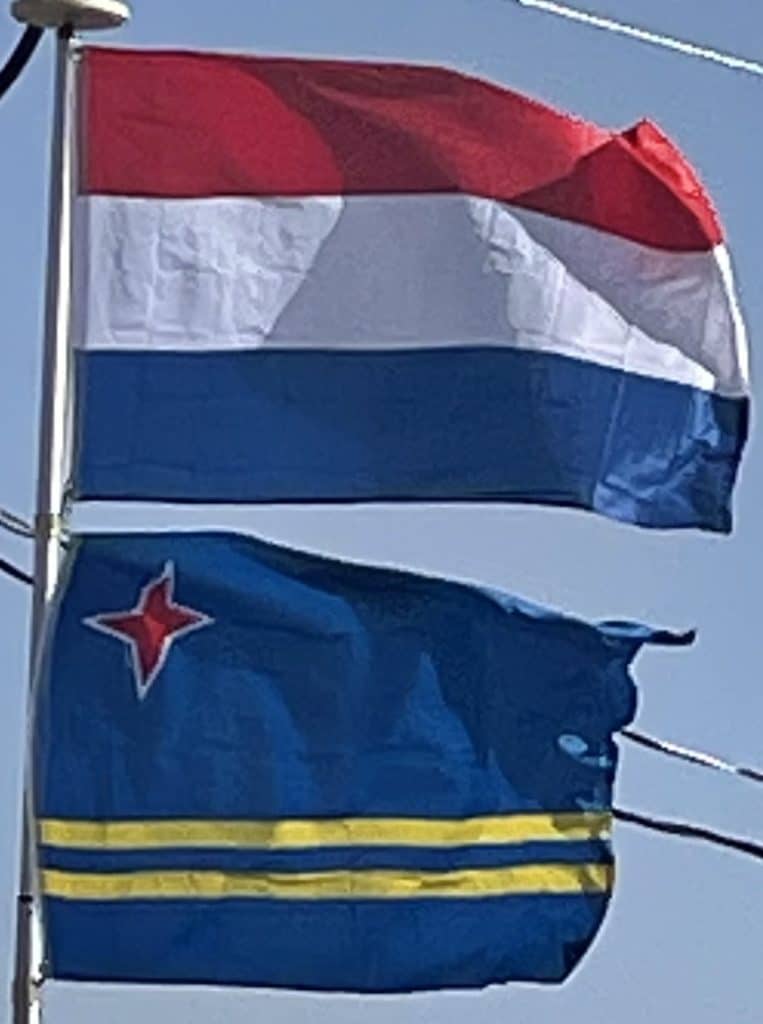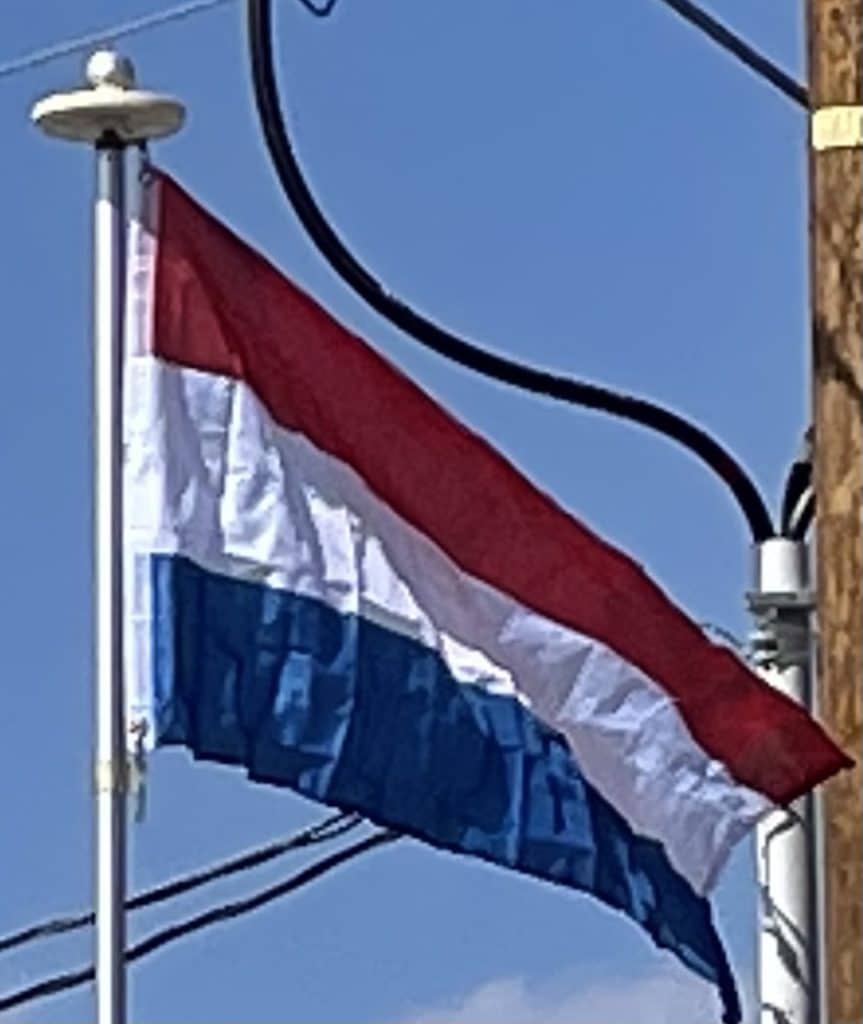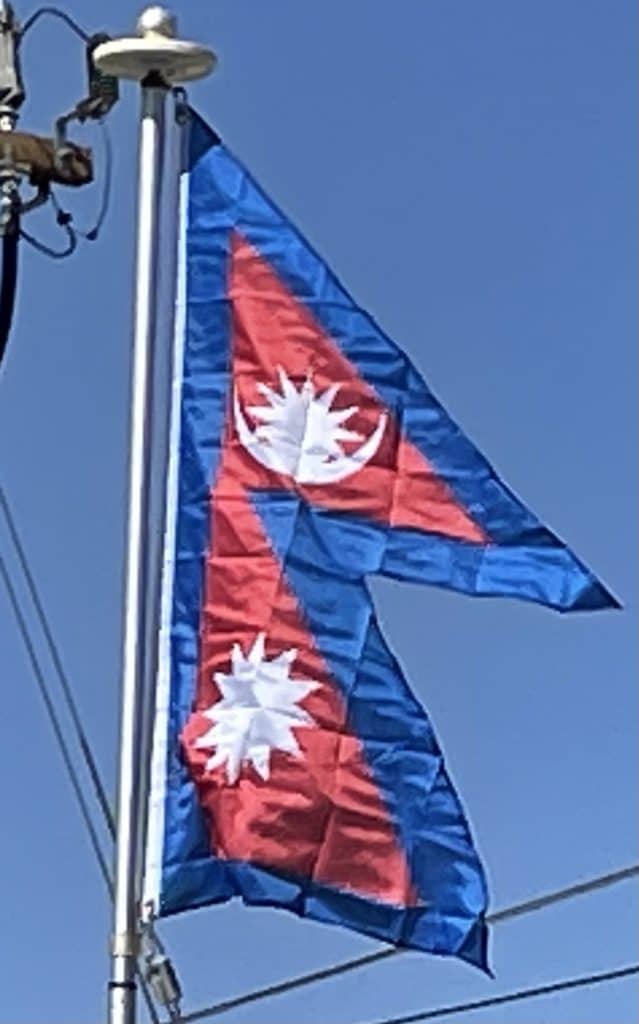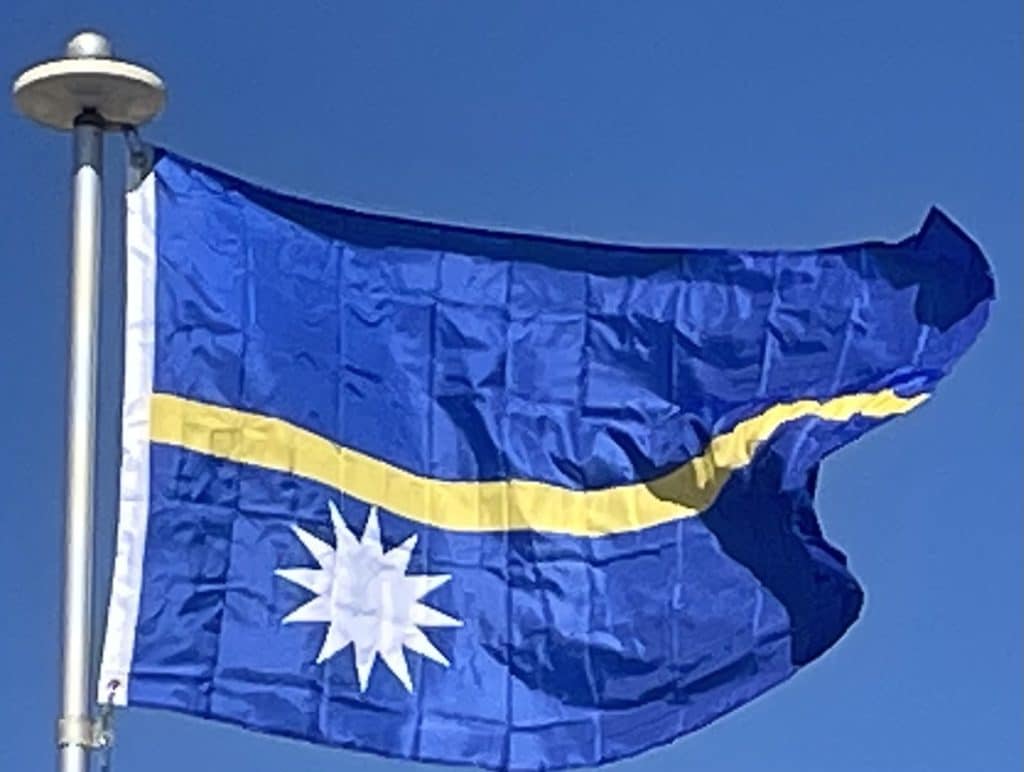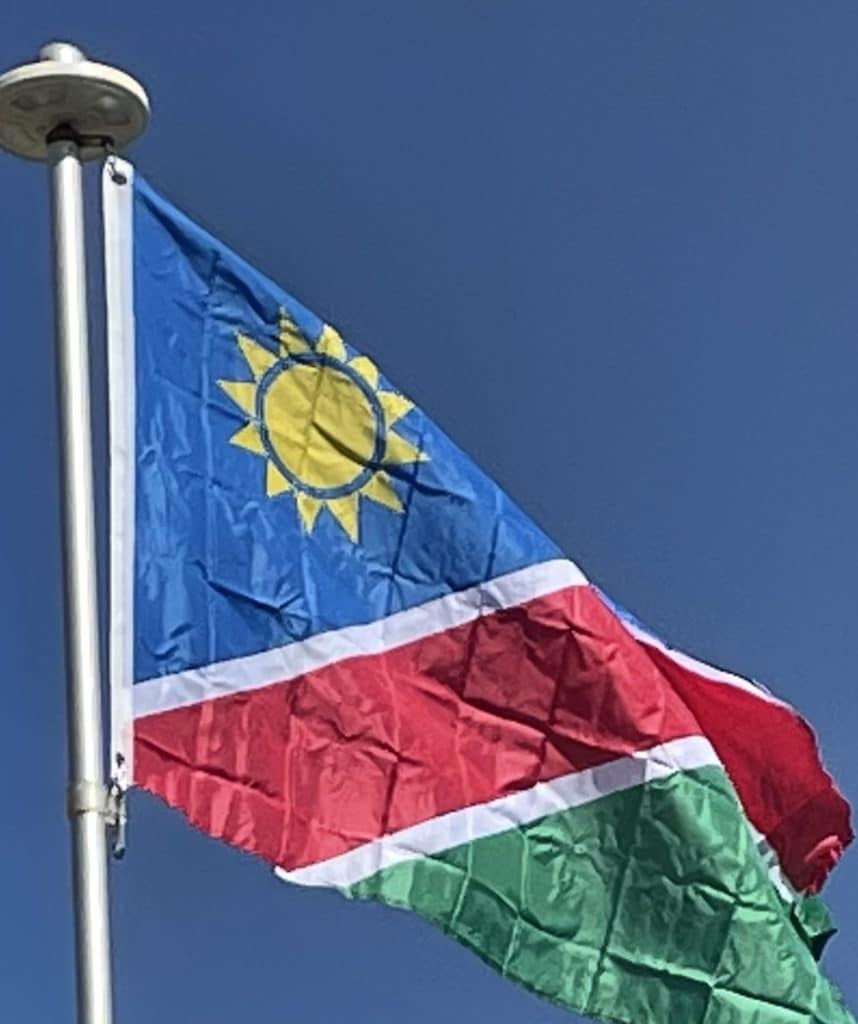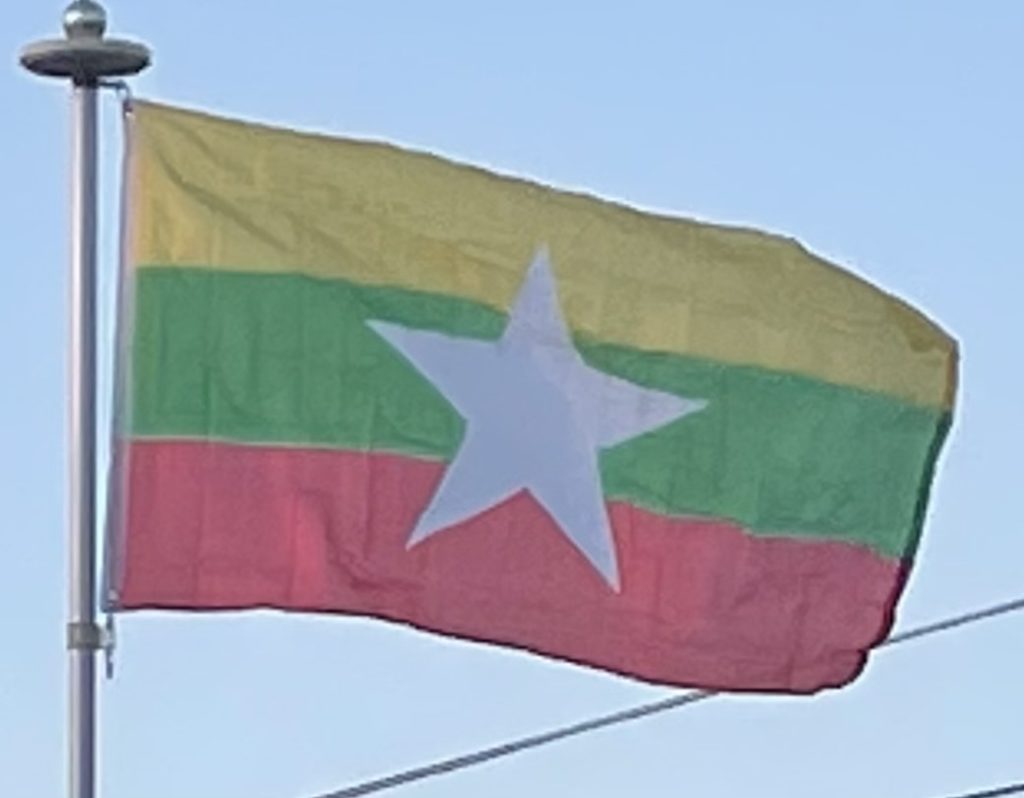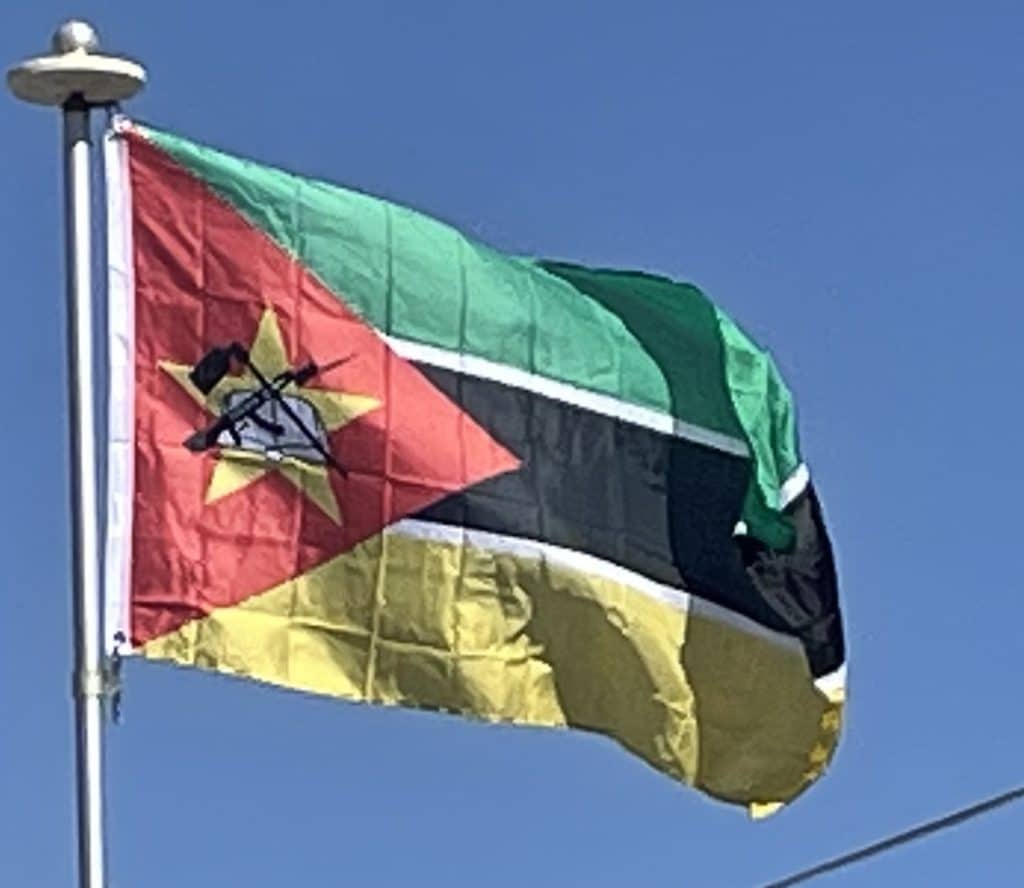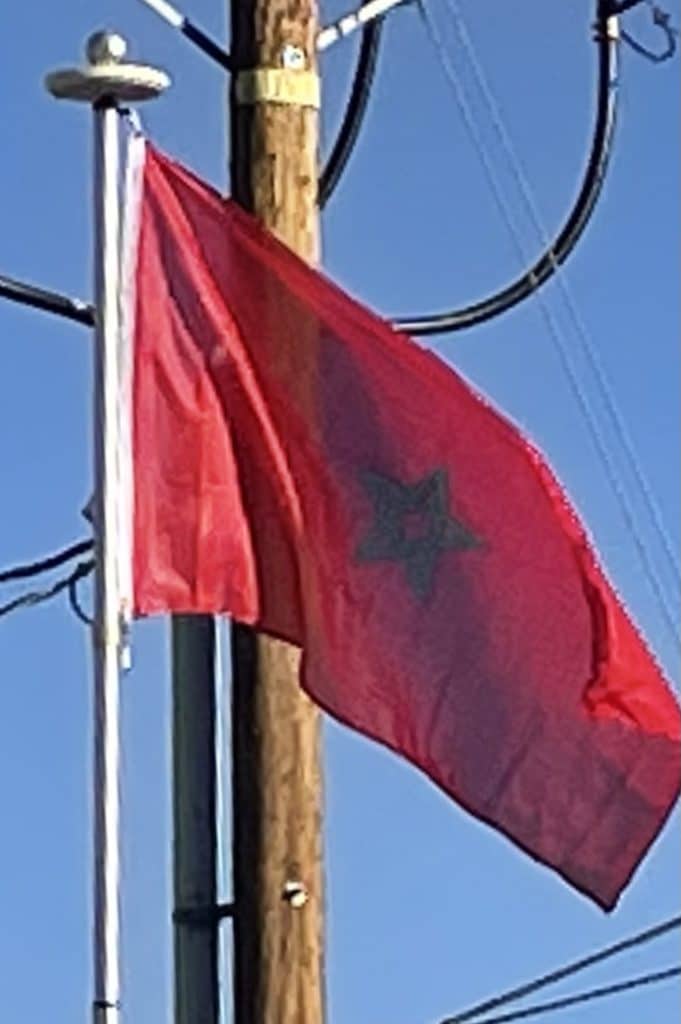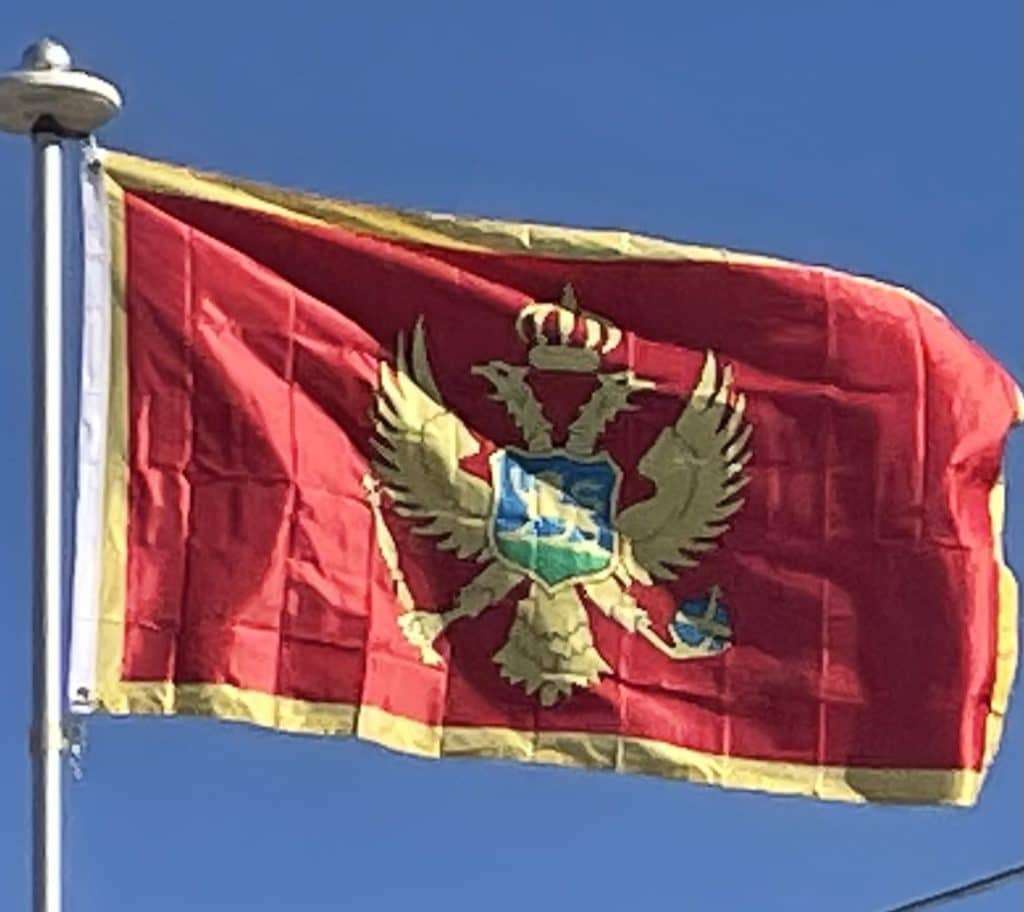Bonaire
The flag of Bonaire has a large dark blue triangle in the lower right corner and a smaller yellow triangle in the upper left corner. It was adopted on 11 December 1981.
The triangles are separated by a white strip, inside of which is a black compass and a red six-pointed star. The dark blue and yellow triangles represent the sea and sun respectively while the dividing white strip represents the sky. The colors red, white, and blue also show Bonaire’s loyalty to the Kingdom of the Netherlands. The black compass represents the population of Bonaire who comes from the four corners of the world.
The red six-pointed star represents the original six villages of Bonaire – Antriol, Nikiboko, Nort Saliña, Playa, Rincon and Tera Korá.
